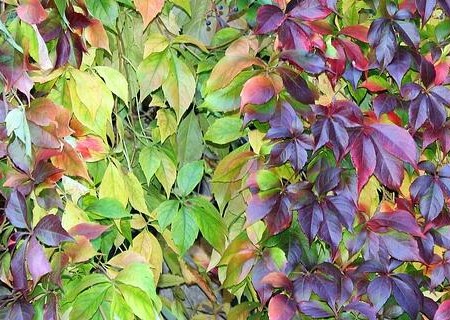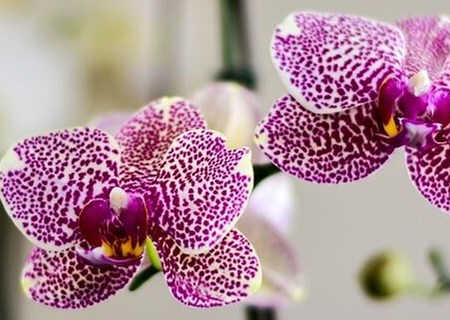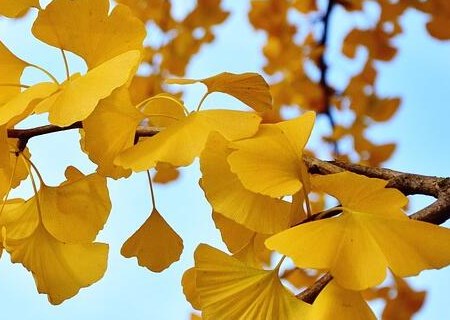What are the seed planting methods of Parthenocissus parthenocissus in the grape family? What are the uses? What's the difference between ivy and ivy?
Parthenocissus is another name for a variety of plants, bundled stone dragon, maple vine, small insect lying grass, red silk grass, red kudzu, lying mountain tiger, red grape vine, Bashan tiger, grape plant. Do you know what are the seed planting methods of Parthenocissus? What are the uses? What's the difference between ivy and ivy? It is common to climb on walls and rocks. The rhizome of Parthenocissus can be used as medicine to break blood stasis and detumescence, and the fruit can be made into wine.

I. seed planting method of Parthenocissus parthenocissus
1. Sowing seeds
Sowing is easy. Generally, after finishing the sown soil, you need to flatten the soil fine, then plant the seeds and fine sand on top of the planting soil, and then cover it with a thin layer of loose organic soil. Probably soon the seeds will be able to grow seedlings.
2. Seedling management
When the seeds grow out of the seedlings, it is necessary to sprinkle water frequently to keep sufficient water, which is conducive to the growth and development of the seedlings.
A beautiful creeper
3. Transplanting
When Parthenocissus parthenocissus seedlings grow three or four leaves, you can choose a lack of sunny weather to transplant. After the transplant, you need to pour manure and fertilizer, and then slowly and carefully care, Parthenocissus began to grow vines and began to climb vines.
4. Suitable environment
Parthenocissus is still very receptive to the environment, and meticulous care will grow successfully after planting. They prefer a wet environment, do not have to avoid direct sunlight, and are very resistant to dry and cold. Usually, you can prune Parthenocissus properly, so that they will look very good.
What are the uses of planting Parthenocissus
1. Parthenocissus is not only green and beautiful, but also has the effect of purifying air, cooling, noise and dust prevention.
Parthenocissus Parthenocissus (Dijin) is a famous decorative plant, especially in vertical greening. Parthenocissus occupies a small area, grows fast and has a large green coverage area. A vine with a stem diameter of 2 centimeters can be planted for two years, and the green coverage of the wall can reach 30 to 50 square meters. The climbing ability of Parthenocissus is so strong that it can climb up from the base of the wall to the top, hence the name. On the day of spring and summer, the thick green leaves covered the wall from afar, as if there was a green tapestry hanging on the wall. Spring young leaves, autumn frost leaves or red or orange, colorful, very gorgeous, as if hung with a huge tapestry, so it is also called Dijin.
Dense branches and leaves in summer, often climbing on walls or rocks, suitable for planting house walls, walls, garden entrances, bridgehead stones, and so on. Can be used for greening house walls, park rocks, not only can beautify the environment, but also can cool down, regulate the air, reduce noise.
Due to the dense stems and leaves of Parthenocissus, covering on the wall of the house, it can not only block the strong sunlight, but also reduce the indoor temperature because of the air flow between the leaves and the wall. As a barrier, it can absorb not only noise in the environment, but also flying dust. Parthenocissus tendril sucker can also absorb water from the wall, helping to dry wet houses, and dry season, can increase humidity.
2. Medicinal value
① promoting blood circulation and detoxification
The nature of Parthenocissus is warm and dry, and the rhizome of Parthenocissus can be used as medicine. Its usage is to take 50 grams of Parthenocissus officinalis with water frying or with wine. It has the effect of dispelling wind and dredging collaterals and promoting blood circulation and detoxification.
② in the treatment of fall injury
Parthenocissus can be applied externally or internally. Take an appropriate amount of Parthenocissus root to smash and apply it to the pain, which can reduce swelling and relieve pain, and promote blood circulation and remove blood stasis. Often used for fall injury and carbuncle swelling symptoms, the effect is very good.
③ dispelling wind and dredging collaterals
Parthenocissus has a strong effect of dispelling wind and dredging collaterals, and is often used to treat rheumatic joint pain and muscle and bone pain.
What's the difference between ivy and ivy
1. Morphological difference
Ivy
Ivy is a woody stem, the stem can be up to 3-5 meters long, much branched, aerial roots on the stem, delicate branches pilose, rust-colored scales, leaves alternate, umbels solitary or 2-7 terminal, yellow-white or green-white, fruit globose, berrylike, yellow or red, flowering from May to August, fruiting from September to November.
Parthenocissus
The shape of Parthenocissus is similar to that of wild grapevines, with stems up to 18 meters long, Cymes often growing on short branches between two leaves, not obvious in clusters, yellowish green or berries purple-black, mostly hermaphroditic, hermaphroditic, small globular berries, blue-black when ripe, covered with white powder, florescence in June, fruit in September-October. The most obvious feature is that Parthenocissus has a strong climbing ability.
2. Differences in habits
Ivy
Ivy is very adaptable to the environment, like a relatively cold climate, strong cold tolerance, light requirements are not strict, can grow there, usually grow in the shady and humid environment.
Parthenocissus
Parthenocissus has strong adaptability and likes shady and humid environment, but it is not afraid of strong light, cold, drought and barren. it can keep semi-evergreen or evergreen in the south of warm temperate zone in winter, resistant to pruning and afraid of stagnant water. Most of them grow in places where the soil is fertile and will be attached to buildings.
3. Differences in distribution.
Ivy
Ivy is native to Europe, Asia and North Africa, and is distributed in Central China, East China, Southwest China, Gansu and Shaanxi.
Parthenocissus
Parthenocissus is native to eastern Asia, Himalayas and North America. It is distributed in Henan, Liaoning, Hebei, Shanxi, Shandong, Jiangsu, Anhui, Zhejiang, Jiangxi, Hunan, Hubei, Guangxi, Guangdong, Sichuan, Guizhou, Yunnan and Fujian.
4. Differences between families and genera
Ivy
Ivy belongs to the plant kingdom, angiosperm phylum, dicotyledonous class, rose subclass, Umbellifera, Araliaceae, stamens, evergreen woody vines.
Parthenocissus
Parthenocissus is a large perennial deciduous woody vine belonging to the plant kingdom, angiosperm, dicotyledonous class, Rosacea, grape order, grape family, and Dijin.
It can also be seen from the differences in families and genera that ivy is an evergreen plant while Parthenocissus is deciduous.
Time: 2019-03-18 Click:
- Prev

Why does the perennial herb Phalaenopsis not bloom? What do you need to pay attention to in planting? How do you breed? Is it poisonous?
Phalaenopsis was born in the tropical rain forest, the nature likes to be warm and afraid of cold. The suitable temperature for growth is 15-20 ℃, and it will stop growing below 10 ℃ in winter, and it is easy to die below 5 ℃. It is a kind of perennial herb. Do you know why Phalaenopsis doesn't bloom? What do you need to pay attention to in planting? How do you breed? Is it toxic?
- Next

What are the seed planting methods of ginkgo trees? What's the use? How much is one? What's the use?
Ginkgo biloba is a deciduous tree of Ginkgo biloba family. Ginkgo biloba is a large deciduous tree with a breast diameter of up to 4 meters. So what do you know about ginkgo seed planting methods? What's the use? How much is it per tree? The fruit of ginkgo tree is commonly known as ginkgo, so ginkgo is also known as ginkgo tree. Ginkgo trees grow slowly and live for a long time.
Related
- Fuxing push coffee new agricultural production and marketing class: lack of small-scale processing plants
- Jujube rice field leisure farm deep ploughing Yilan for five years to create a space for organic food and play
- Nongyu Farm-A trial of organic papaya for brave women with advanced technology
- Four points for attention in the prevention and control of diseases and insect pests of edible fungi
- How to add nutrient solution to Edible Fungi
- Is there any good way to control edible fungus mites?
- Open Inoculation Technology of Edible Fungi
- Is there any clever way to use fertilizer for edible fungus in winter?
- What agents are used to kill the pathogens of edible fungi in the mushroom shed?
- Rapid drying of Edible Fungi

